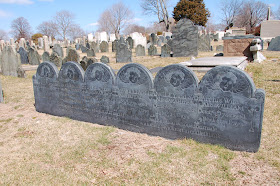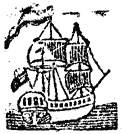 John Horne
John Horne (1736-1812; he added the surname Tooke in 1782;
color portrait here) was a British political activist. He believed in a Bill of Rights, full publication of government proceedings, the rule of law, and curbs on governmental power, and he wasn’t afraid to say it. Which, in the late 1700s, made him a dangerous radical.
Horne was inspired by
John Wilkes but later feuded with him, just as he worked and feuded with a number of other British politicians on the left. Since the 1820s authors have suggested that
he wrote the famous Junius letters. However, some of those letters were addressed to Horne, and indicate he and Junius were at odds—though he seems quite capable of having picked a fight with himself.
During the Revolutionary War, Horne spoke up for the American cause. In June 1775 he announced in the
Public Advertiser that his Society for Constitutional Information had raised over £100 for:
the relief of the widows, orphans, and aged parents of our beloved American fellow subjects, who, faithful to the character of Englishmen, preferring death to slavery, were, for that reason only, inhumanly murdered by the king’s troops at Lexington and Concord.
The government disliked that, fined the printers of Horne’s announcement £100 each, and took Horne to court for libel.
The state trial began under
Lord Chief Justice Mansfield on 4 July 1777. Horne undertook to defend himself, which had its good points and its bad points. He gave an impassioned account of his case, but then had to admit it had “made me forget to examine my witnesses.” So he interrupted Attorney-General
Edward Thurlow and asked to be allowed to return to his case.
Mansfield agreed. Horne called Thurlow himself. Mansfield squashed that. Horne then called Lord
George Germain, the Secretary of State for America and chief prosecutor of the war. Germain didn’t appear. Horne made a remark about Gen.
Thomas Gage also being unavailable—he’d heard Gage was in Germany—and finally called his third witness:
Edward Thoroton Gould, former lieutenant in the 4th Regiment and former
prisoner of war, who had returned to England in mid-1775.
After a bit of squabbling over procedures, Horne read out the
Massachusetts Provincial Congress’s deposition from Gould (
quoted yesterday), in which the lieutenant had said he couldn’t tell who had fired first at Lexington, and that
British soldiers had fired first at Concord. Then
Horne got down to questioning. Unfortunately for him, he hadn’t had the chance to examine Gould in advance, and some of the former officer’s replies surprised him.
Horne: “Was you, at the time when the orders were given to you to go to Lexington and Concord, apprehensive of any attack by those Americans against whom you went?”
Gould: “We were as soon as we saw them; we found them armed.”
Horne: “Before you went from Boston?”
Gould: “That day we did.”
Horne: “How many miles is Lexington or Concord from Boston?”
Gould: “The farther is about 25 miles, the nearer is about 12.”
Horne: “Did you know, had you any intelligence that the Americans of Lexington and Concord were, at that time, marching, or intending to march to attack you at Boston?”
Gould: “We supposed that they were marching to attack us, from a continued firing of alarm guns, cannon, or they appeared to be such from the report.”
And that caught the Lord Chief Justice’s attention.
Mansfield: “Did you say cannon?”
Gould: “Cannon.”
Mansfield: “When was that?”
Gould: “As soon as we began the march, very early in the morning.”
Horne tried to pull it out by arguing that the alarm guns were simply a logical
response to the army’s actions, not a provocation or escalation or sign that the army might have been justified in using deadly force.
Horne: “But did you hear those alarm guns before your orders for the march were given, or before your march began?”
Gould: “No.”
Horne: “But after you had begun your march?”
Gould: “Yes; after we began our march the alarm guns began firing.”
Horne: “Did you suppose those alarm guns to be in consequence of your having begun the march?”
Gould: “I cannot say.”
Horne: “I will not desire you to suppose (though the gentleman has supposed that they were coming to attack him) but do you know if any intelligence whether the persons who fired the alarm guns, whether those were the persons who were killed at Lexington and Concord?”
Gould: “No; I do not.”
And the jury also wanted to be certain about the militia alarm.
Juryman: “Pray who did the alarm guns belong to; to the Americans or our corps?”
Gould: “From the provincials.”
Horne: “What do you mean by an alarm gun?—Alarm may be misunderstood.”
Gould: “That is, what they term in the country an alarm gun; it is a notice given to assemble the country.”
Gould’s testimony about the Massachusetts militia’s alarm system proved decisive. Lord Mansfield summed up his conclusions like this:
Now what evidence has Mr. Gould given? Why, he says, that he was sent with a part of the king’s troops, by the orders of general Gage, the governor of the province, the commander of the king’s troops; that when they began their march (which was about two or three in the morning) he heard (I think he says he heard) a continual firing of alarm cannon, which is a signal, at certain distances, used in America to raise the country; and that they heard as soon as they began their march; and from thence they concluded that the provincials were marching to attack them.
When they came within sight of them, they found them armed, in bodies of troops armed. This was not a stated time of peace when the king’s troops, under the authority of the governor, go from one part to another; to have bodies of men, in military array, armed, and signals fired!
After about ninety minutes of deliberation, the jury returned with a verdict of guilty against Horne. According to a relative of another officer in the 4th Regiment, “Before Mr. Gould gave his testimony, many present believed that our troops had murdered the natives sleeping in their houses, and that it would be proved by Mr. Gould’s evidence.”
Instead, Horne was imprisoned for a year, and then retired to the country for a while. He resumed his political career after the American war. In 1794 the British government arrested Horne Tooke again, this time on the charge of high treason, for criticizing the kingdom’s war against Revolutionary France. That jury acquitted him after only eight minutes. Though barred from sitting in Parliament because he’d taken clerical orders early in his career, Horne Tooke made his house in Wimbledon a center of British reform politics for the next two decades. He also published a popular book on language called
The Diversions of Purley.
TOMORROW:
Whatever happened to Edward Thoroton Gould? (It gets juicy.)




 The phrase “a large Quantity of Military Stores” seems deliberately vague, especially in light of the next paragraph’s claim that the soldiers “effected the Purpose for which they were sent.” Gage had
The phrase “a large Quantity of Military Stores” seems deliberately vague, especially in light of the next paragraph’s claim that the soldiers “effected the Purpose for which they were sent.” Gage had  In describing the troops’ withdrawal from Concord, the most difficult part of the mission, Gage minimized the damage they suffered, and blamed the enemy for atrocious tactics.
In describing the troops’ withdrawal from Concord, the most difficult part of the mission, Gage minimized the damage they suffered, and blamed the enemy for atrocious tactics. The “scalping” actually referred to a single incident: a Concord cabinetmaker named
The “scalping” actually referred to a single incident: a Concord cabinetmaker named  The actual number of
The actual number of  Gage went on to report 65 men killed, 180 wounded, and 27 missing, broken out by their various units. That count was basically accurate, though some of the wounded men later died, bringing the British dead to more than 70.
Gage went on to report 65 men killed, 180 wounded, and 27 missing, broken out by their various units. That count was basically accurate, though some of the wounded men later died, bringing the British dead to more than 70.



